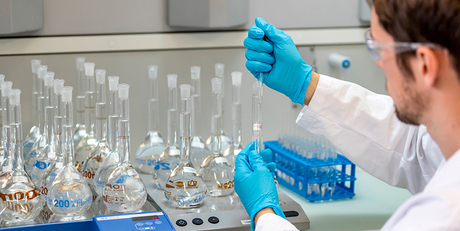Closing cycles sustainably
To ensure that we continue to live on a healthy planet in the future that enables us to enjoy well-being and prosperity, there is no way around using our resources more sparingly and closing material and energy cycles.
This also applies to urban water management. On the one hand, wastewater contains valuable resources: water, nutrients and energy. The demand for these resources has grown increasingly in recent decades – in booming urban regions, in agriculture, in households, trade and industry. New solutions are needed worldwide to meet this increasing demand through reuse. Secondly, the wastewater that is released into the environment still contains excessive levels of pollutants and nutrients in many places. The capacity of the environment to absorb these is limited. We are seeing unprecedented levels of water pollution worldwide. Even though water quality has improved considerably in some regions, such as Switzerland, thanks to the construction of large-scale wastewater infrastructures. In order to solve the problems of water pollution and resource loss simultaneously and in the long term, new approaches must be discussed that require far-reaching systemic changes. There is a growing political will for change. This is reflected in global trends such as the promotion of a stronger circular economy, the shift towards renewable energies and the sustainable development goals. Eawag is an important player in this process and provides new solutions for recovering water, nutrients, recyclable materials and energy from wastewater and waste.
Making the necessary adjustments
We can already close regional water cycles in industrialised nations such as Switzerland by means of centralised wastewater treatment systems. In other words: the water used by humans is channelled via the sewage system to wastewater treatment plants, where it is purified and discharged into bodies of water, from where it is later extracted and processed to drinking water. Eawag researchers are working successfully to continuously adapt this system to new challenges. The current focus is on the question of how much potential there is in Switzerland to directly reuse water from wastewater treatment plants locally instead of discharging it into water bodies after treating it. Although treated wastewater is not of drinking water quality, it could be used as industrial process water or for irrigation in agriculture. In dry periods, which are becoming increasingly frequent as a result of the climate crisis, this could help to conserve drinking water reserves. Other researchers are working on blue-green infrastructures. Designing urban spaces to be close to nature allows rainwater to be kept where it falls by means of infiltration areas. This changes the local water balance, makes water an integral part of the city and mitigates the effects of drought and heat.
Eawag is also in favour of seeing nitrogen and phosphorus in wastewater more strongly as resources for agriculture and is investigating technologies to recover these from wastewater and faeces on an even larger scale. Processes to convert organic compounds in wastewater into bioplastics using microorganisms are also being investigated.
Rethinking from scratch
Based on its decades of experience in wastewater management, Eawag is also going one step further. Researchers are working on methods that can recover water, nutrients and energy on site directly in small-scale cycles. These solutions were originally designed for regions in the Global South to provide people with urgently needed access to sufficient clean water and safe sanitation facilities without the need to build complex infrastructures such as sewage systems, water supply and wastewater treatments plants.
A whole range of innovations are being investigated, all of which have one thing in common: the waste streams are separated at source and processed specifically. Slightly polluted water from households can be reused after treatment for flushing toilets or washing laundry. Urine is collected separately from the flushing water, and the nutrients it contains are directly processed into fertiliser on site. Faeces can be recovered to produce heating pellets, biogas or compost. Rainwater can also be collected, stored and used for flushing toilets, for example. All of these measures help to close cycles and solve pressing sustainability problems in cities around the world.
The solutions developed should be quickly and flexibly adaptable to local conditions and needs – both in large cities such as Bengaluru (Bangalore) or San Francisco, where water is becoming scarce due to climate warming and population growth, and in remote locations such as alpine cabins in Switzerland. Eawag researchers are currently even working with the European Space Agency on ways to close water and nutrient cycles on board spacecraft. The researchers want to show decision-makers in politics, industry and civil society that such solutions are feasible and how a market can be created for them.
Eawag’s expertise is also required in another area: in a complex world, different systems are needed for different regions and applications. We need combinations of the various recycling technologies and researchers from the natural, engineering and social sciences who are prepared to develop and coordinate them together and support their social anchoring. Anchored in Eawag’s unique ecosystem, with a global vision.



